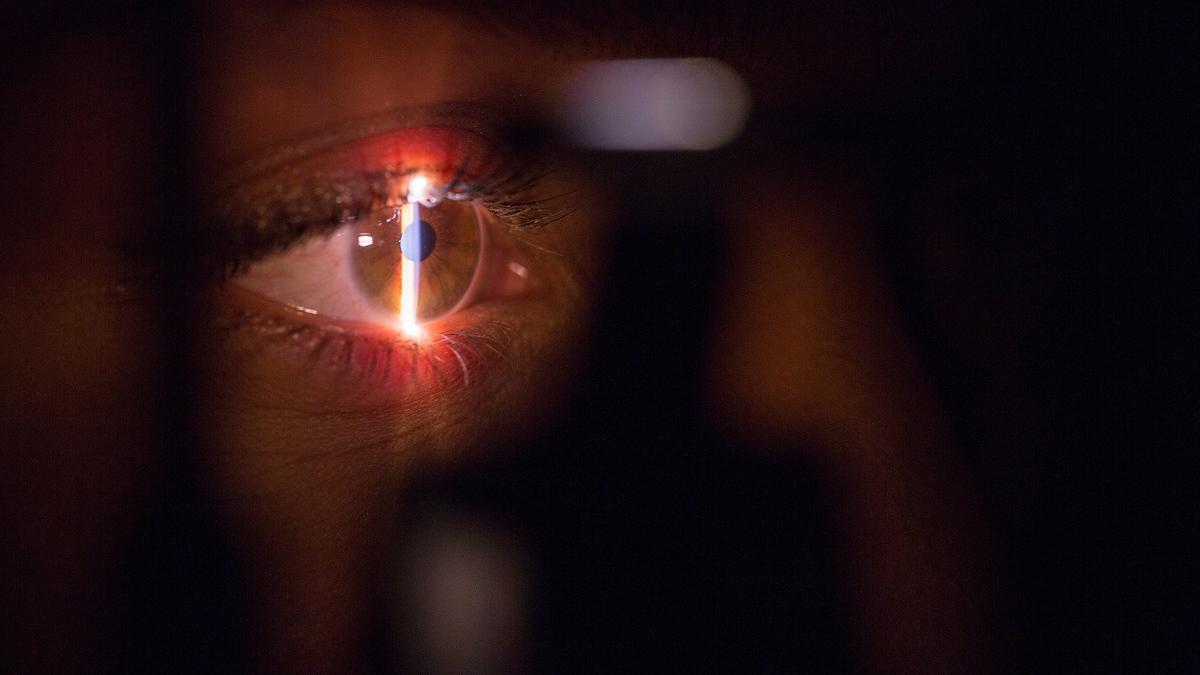Suffer diabetes poses a risk when suffering from some complications such as:
-
Cardiovascular events, caused by circulatory problems derived from this disease
-
Diabetic foot
-
Renal problems
-
sexual dysfunction
-
Oral health problems
-
Genitourinary tract infections.
But in addition to all those already numbered, Diabetes is the cause of numerous eye diseases.
and heto more frequent and disabling due to the anatomical and functional impact it has It is called diabetic retinopathy: a visual pathology that is the main responsible for blindness in people with diabetes.
What is diabetic retinopathy?
The specialists of the Spanish Society of Ophthalmology define diabetic retinopathy as:
-
“A common complication of diabetes mellitus (both type 1 and type 2) that compromises the functioning of the retina.”
-
It is a visual disease that appears when the blood vessels in the retina deteriorate.
-
These altered vessels can dilate, cause the escape of fluid (plasma, lipids and/or blood) and can even become blocked.leaving part of the retina without blood circulation.
All these injuries, caused by diabetes, what they do is go progressively damaging the different structures that make up the eyeballleading to a severe decrease in vision and even, if not acted on in time and treated properly, leading to blindness.
And although Anyone can suffer from diabetic retinopathy.there are a series of factors that increase the chancesespecially if the patient has had the disease for a long time:
-
Failure to maintain adequate control of glucose levels in blood
-
Have the high cholesterol.
-
Smoke.
How can we recognize the symptoms?
Frequently, the patient is not aware of the disease until the damage is severe. And even in these cases, surprisingly, diabetic retinopathy does not always cause visual discomfort.
Even so, in order to address this pathology as soon as possible, it is worth knowing the diabetic retinopathy symptoms To want the alarms to go off as soon as possible:
-
Blurry vision.
-
Gradual loss of vision.
-
Vision of spots or “floaters.”
-
See shadows or perceive areas of vision that have been lost.
-
Trouble seeing at night.
In any case, a person with diabetes should include a visit to the ophthalmologist in their regular check-ups, in order to detect retinopathy in time.
And it is that Early diagnosis will allow treatments to begin in order to significantly improve the visual prognosis of the disease and thus achieve prevent progression to blindness.
How is diabetic retinopathy treated?
Ophthalmologists will decide the best way to treat this ocular pathology depending on the type of patient and the degree of progression of the disease. So, There will be cases in which it will only be necessary to carry out periodic checks.
In other casesexplain from the Spanish Society of Ophthalmology:
-
“It will be necessary selectively apply laser about the abnormal vessels of the retina to reduce edemaor on ischemic areas (without blood supply) to prevent the progression of the disease towards more serious forms.”
-
In the most advanced casesin which the retinopathy itself has generated intraocular hemorrhage and/or retinal detachment, it is necessary to resort to intraocular microsurgery (vitrectomy).
In addition to surgeries, There are also intraocular drugs that injected They achieve good results in certain cases.
I have diabetes, when and how often should I go to the ophthalmologist?
As we have already seen, rigorous ophthalmological follow-up is essential for patients with diabetes, since generally, diabetic retinopathy does not cause symptoms until the lesion is severe.
But when and how often to go?
Well, ophthalmology specialists recommend that in those people with type 1 diabetes the ophthalmological examination should be carried out 3-5 years after diagnosis.
Instead, people with type 2 diabetes should begin to perform ophthalmological examinations from the moment it is diagnosed the illness.
After this first exam, to control the Diabetic retinopathy All patients must undergo a annual ophthalmological check-upin the event that no lesion is observed.

